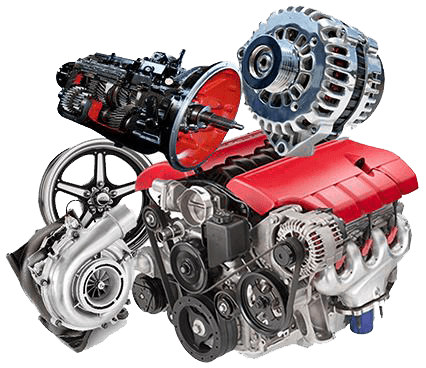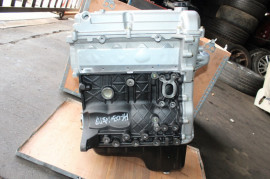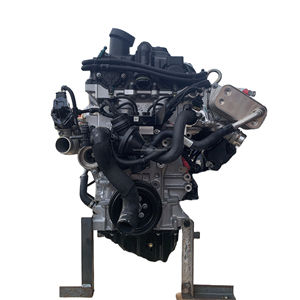Exploring the Inner Workings of a Compact Lorry's Engine System
As drivers, we usually take for given the intricate processes that take place within the confines of our lorry's engine system. In this exploration of a small vehicle's engine system, we will untangle the inner operations of this mechanical symphony, dropping light on the enigmas that drive us forward on our everyday trips.
Combustion Process Introduction
The combustion process in a small vehicle's engine system is a vital device that efficiently converts gas right into energy to power the car. This process takes place within the burning chamber of the engine, where fuel and air mix, fire up, and create regulated explosions. The combustion procedure includes four primary phases: consumption, exhaust, compression, and power.
During the intake phase, the piston moves downward, reeling in a mix of air and gas into the burning chamber. The next phase, compression, includes the piston relocating up, pressing the air-fuel mix to raise its strength. Subsequently, in the power phase, the ignition system stirs up the compressed blend, resulting in a fast expansion of gases that forces the piston pull back. This downward motion generates the power needed to drive the lorry. Finally, in the exhaust phase, the scorched gases are expelled from the burning chamber via the exhaust valve, preparing the chamber for the following cycle. This cyclic burning process is fundamental to the procedure of a portable vehicle's engine system, making sure efficient power conversion for propulsion.
Piston and Cylinder Interaction

The piston's exact fit within the cyndrical tube is important for preserving ideal compression and stopping energy loss during combustion. Tight clearances between the piston and cylinder walls make sure effective sealing, enabling the piston to move smoothly without allowing gases to leakage past. Correct lubrication is additionally essential to lower rubbing and use between these elements, enhancing durability and efficiency.
Additionally, the design and materials made use of in making the piston and cyndrical tube impact engine efficiency and resilience. Modern engines frequently employ light-weight yet sturdy materials like aluminum alloys for pistons and cyndrical tube linings to decrease inertia and enhance thermal performance. On the whole, the harmonious interaction in between the piston and cylinder is fundamental to the engine's capability and general performance.
Gas Injection System Functionality
Gas injection systems in portable car engines play a crucial duty in exactly delivering fuel to the burning chamber for effective and controlled ignition. The gas injection system works by injecting gas into the combustion chamber at the optimum moment throughout the engine's operation (opel corsa engine). This specific timing guarantees that the gas mixes equally with the air for proper burning, leading to boosted fuel effectiveness and reduced discharges
There are primarily two kinds of fuel injection systems made use of in compact automobile engines: port gas injection (PFI) and straight gas injection (DFI) PFI systems infuse gas right into the intake port prior to the consumption valve, while DFI systems inject gas straight into the burning chamber. Both systems have their benefits, with DFI offering much better gas atomization and PFI providing a much more cost-efficient service.
Comprehending Engine Air Conditioning Mechanisms
Efficient operation of a portable lorry's engine depends heavily on the effectiveness of its cooling mechanisms. The cooling system in a portable lorry normally consists of several parts functioning together to regulate the engine temperature level. Understanding these engine air conditioning mechanisms is crucial for preserving the performance and long life of a small vehicle's engine system.

Exhaust System Elements Explained
The optimum functioning of a compact lorry's engine air conditioning mechanisms relies on a corresponding system called the exhaust system, which consists of different important components for making certain effective emissions and engine efficiency. The exhaust system includes parts such as the exhaust manifold, catalytic converter, muffler, and tailpipe. The exhaust manifold gathers exhaust gases from the engine's cyndrical tubes and paths them to the catalytic converter. The catalytic converter after that converts harmful toxins in the exhaust into much less damaging emissions prior to releasing them from this source via the check muffler and tailpipe.
One vital part of the exhaust system is the oxygen sensing unit, which keeps track of the oxygen levels in the exhaust gases to aid control gas consumption and make sure optimal engine performance. opel corsa engine. In addition, the resonator might be present in some exhaust systems to reduce noise degrees. Overall, the exhaust system plays a crucial duty in maintaining engine efficiency, decreasing dangerous exhausts, and ensuring a quieter driving experience for small lorry proprietors

Verdict
To conclude, the portable vehicle's engine system is a complicated mix of parts that collaborate to help with the burning process, convert fuel right into power, and eliminate waste gases. Recognizing the inner functions of the engine system, consisting of the piston and cyndrical tube communication, fuel shot system, engine cooling systems, and exhaust system elements, is essential for preserving optimum performance and efficiency of the car.
The burning procedure Home Page in a compact car's engine system is an essential device that successfully transforms fuel into energy to power the car.Fuel shot systems in compact vehicle engines play a crucial role in specifically supplying gas to the burning chamber for regulated and reliable ignition.There are mainly two types of gas shot systems utilized in small automobile engines: port gas shot (PFI) and direct fuel shot (DFI) Comprehending these engine cooling systems is essential for keeping the efficiency and durability of a compact vehicle's engine system.
The optimum performance of a portable lorry's engine cooling devices depends on a corresponding system understood as the exhaust system, which comprises various crucial parts for making sure efficient emissions and engine efficiency.
Comments on “Opel Corsa Engine: Common Issues and How to Deal with Them”